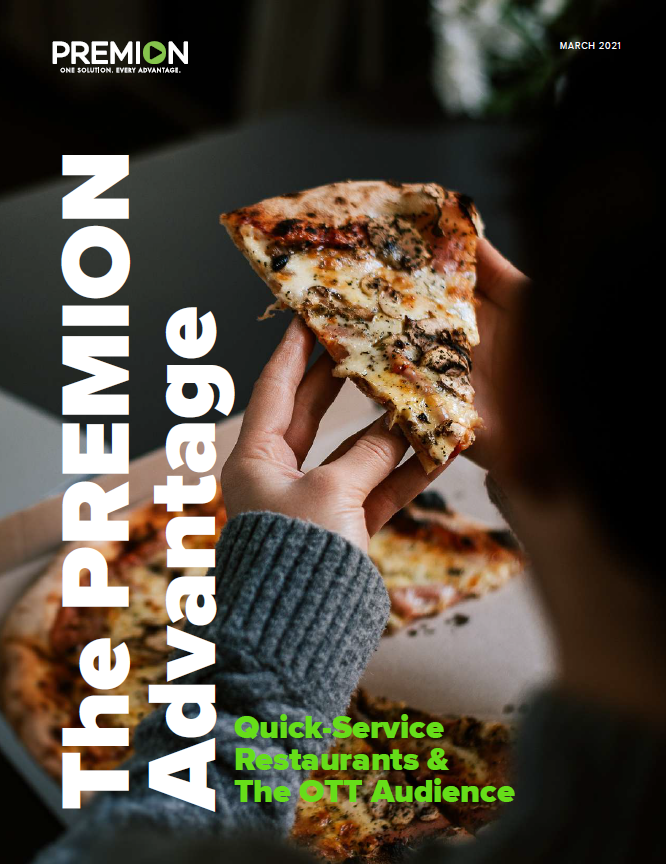Serving Up the Growing CTV Opportunity for Quick Serve Restaurants

Author: Peter Jones, Head of Local Sales, Premion.
The pandemic has forced quick serve restaurants (QSRs) to adapt quickly and make the best of disruptive change—and in many instances, that’s led to unparalleled innovation. This past year has accelerated the digital transformation of QSRs, compressing years of modernization into months and even weeks. Convenience, accessibility, frictionless ordering and, above all, safety are now top priorities for restaurant operators to win over digital-ready customers for the post-pandemic era.
According to a recent National Restaurant Association survey, a whopping 67 percent of restaurant operators have added curbside pickup since the beginning of the pandemic, 27 percent added third-party delivery, and 17 percent introduced in-house delivery. And almost all plan to stick with these offerings permanently.
Even as restaurants open for indoor and outdoor dining, new digital capabilities will become a mainstay of the brick-and-mortar dining experience with the deployment of digital menus, mobile app and kiosk ordering, and contactless payment options to appeal to customers’ safety concerns. Forward-thinking QSRs are continuing to invest in technology innovations to enhance both the take-out and dine-in experience, including developing smaller footprints, different restaurant sizes, kiosk-driven models, and ghost kitchens.
To capture the attention of new and existing customers, QSRs are increasingly focused on local advertising and they’re seeking more cost-effective ways to promote their brand, whether it’s promoting special menu options, waived delivery fees or other new offerings. With the surge in streaming TV viewing, QSRs advertisers are leveraging the growing opportunity to reach a highly engaged audience with CTV/ OTT advertising campaigns.
This year, eMarketer forecasts that 230 million people are expected to stream OTT—that’s 69% of the U.S. population. According to IAS, almost nine in 10 consumers have access to a CTV device and eMarketer projects U.S. CTV advertising will soar to $11.36 billion in 2021 and $14.11 billion in 2022. CTV/OTT provides QSR brands with an ideal blend of digital marketing capabilities with the quality viewing experience of television. Specifically, the addressability in CTV/OTT allows advertisers to tailor messages and target viewers by location, such as zip codes, dayparts, and even by consumer behaviors and interests.
According to a recent MRI Simmons study, 86% of heavy QSR customers are OTT viewers and nearly 70% of those OTT viewers have visited a QSR restaurant six or more times in the last 30 days. Moreover, with many QSRs leaning towards healthier menu options, the report also found that half of OTT viewers are interested in healthier fast-food choices.
Whether its driving brand awareness or performance marketing, QSR advertisers have the ability to tie campaign spending to direct business results with OTT attribution capabilities. For a recent Premion QSR campaign, we drove 4,220 location visits and 2,660 unique location visitors during the first month — proving the efficacy of ad spending and the power of OTT attribution.
QSRs need a trusted CTV/OTT advertising partner that can execute locally in reaching the right consumers at the household-level, track conversions, and reduce wasted impressions. Premion is a proven partner in driving measurable outcomes for many QSR brands. We’ve successfully executed a multitude of campaigns for hundreds of QSR brands— from large national and regional chains to small businesses.
To dig deeper, click here for The Premion Advantage: QSR Advertising and the OTT Audience

Or HERE to start a convesation.
Read our article on MediaPost here.

